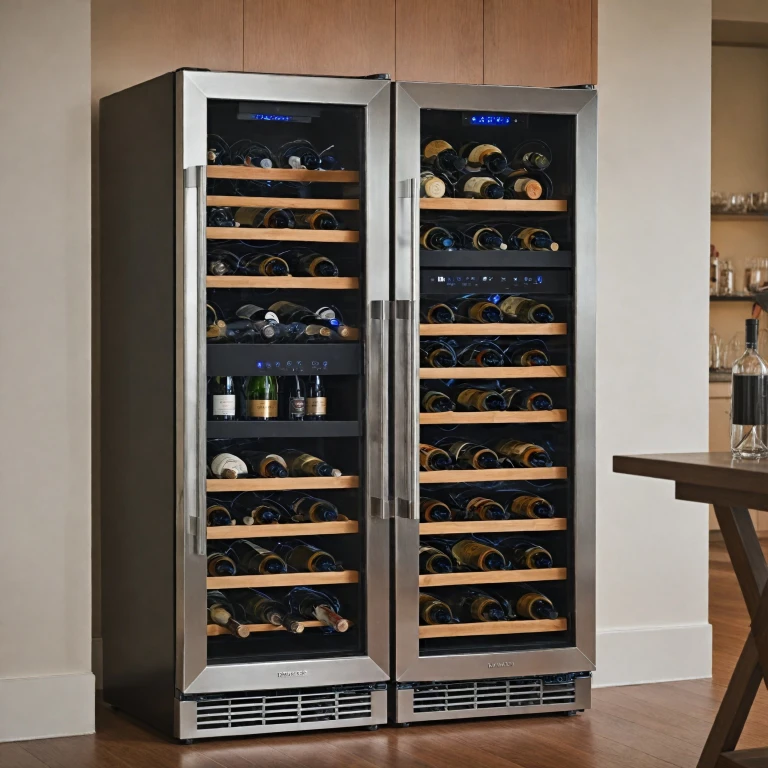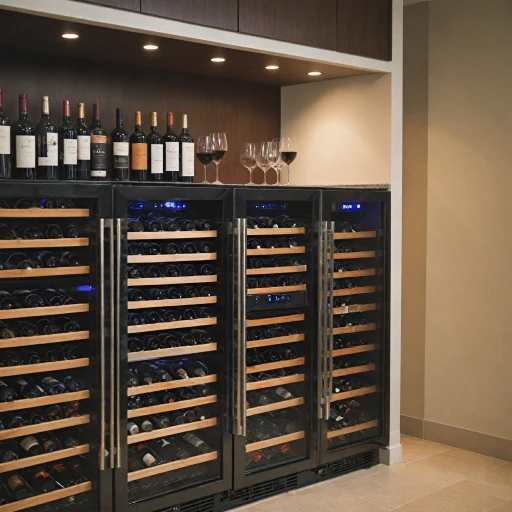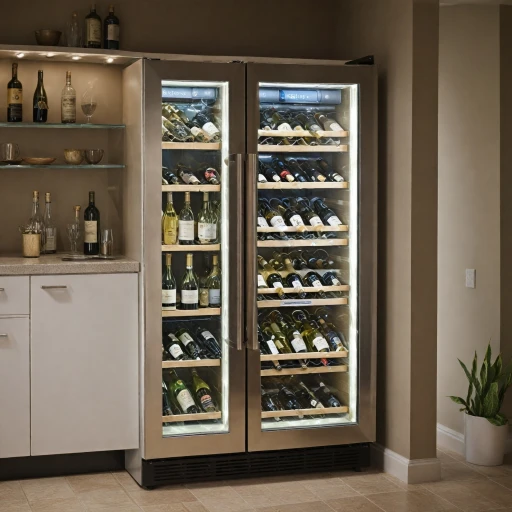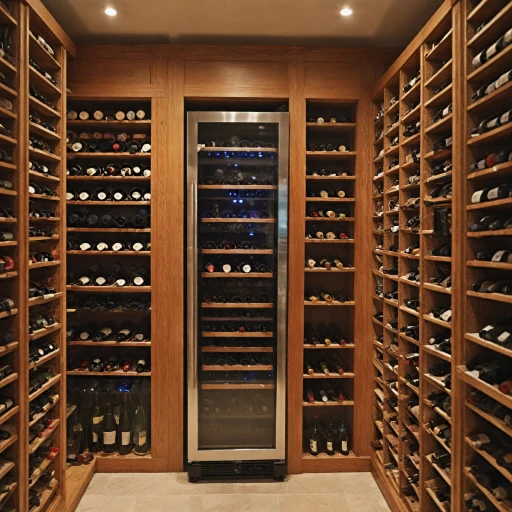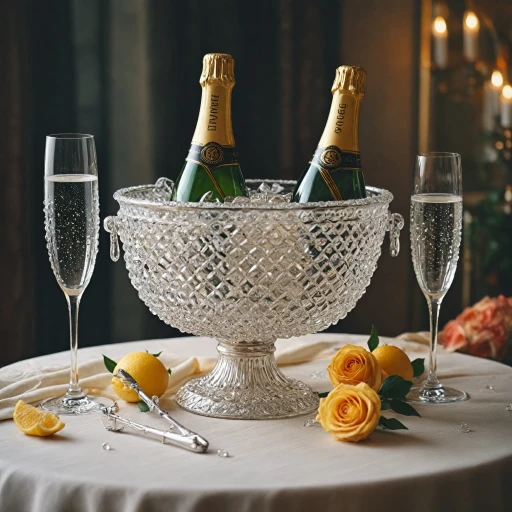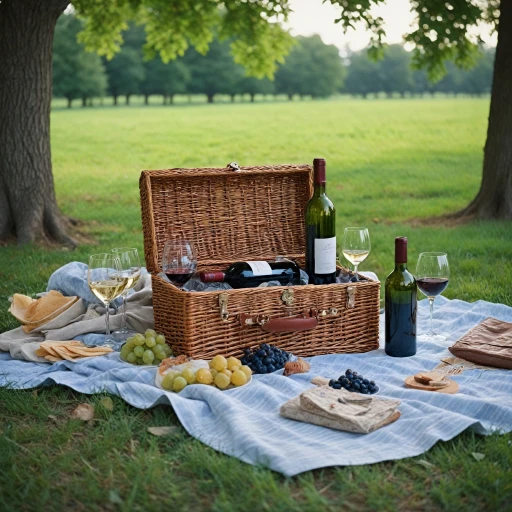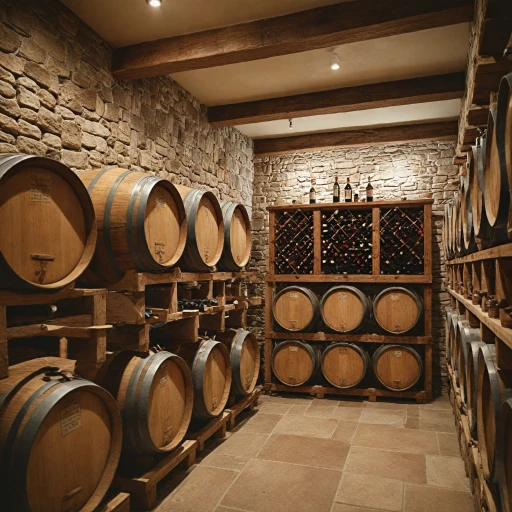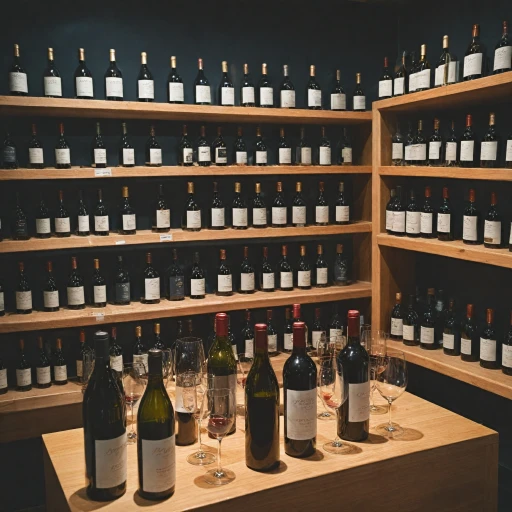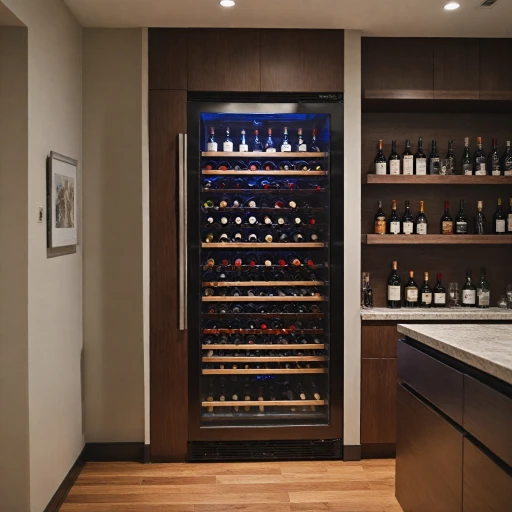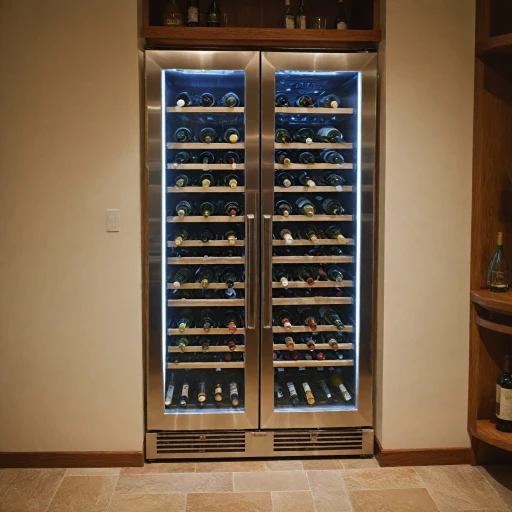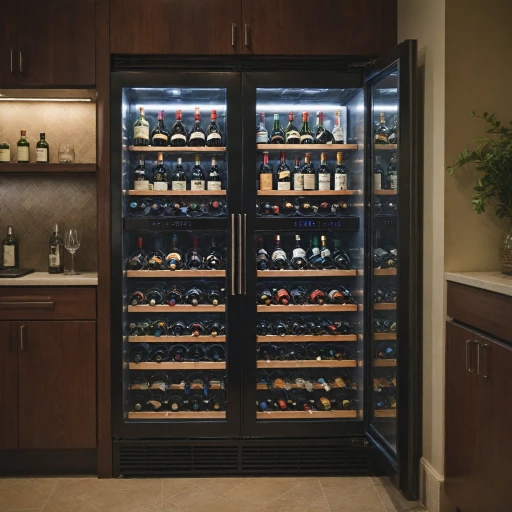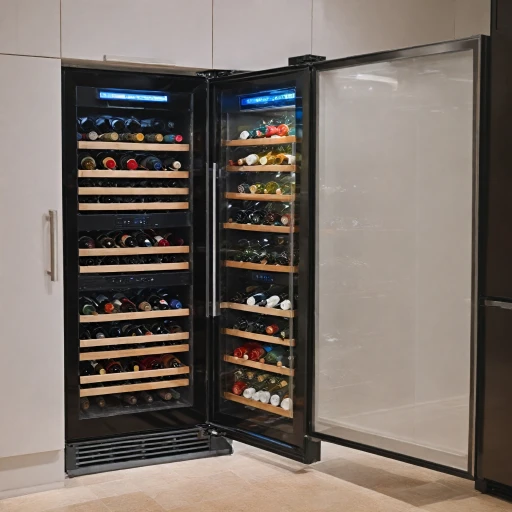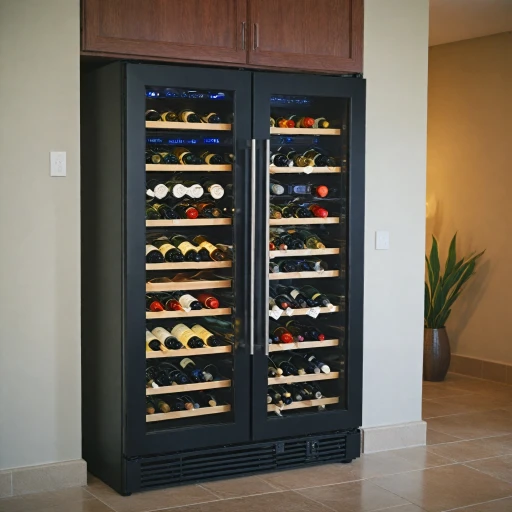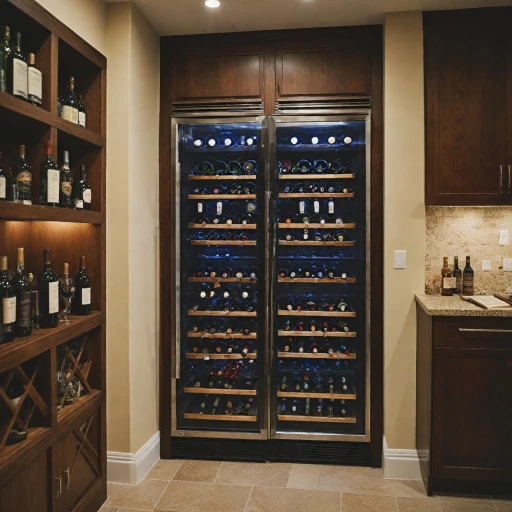
Understanding Wine Cooler Temperature Basics
Getting to Know Your Wine Cooler
Understanding the basics of wine cooler temperature settings is crucial for any wine enthusiast. A wine cooler, often referred to as a wine fridge, is designed to store wine at optimal temperatures, ensuring that each bottle maintains its intended flavor and aroma. The right temperature can make a significant difference in how your wines taste, whether you're serving red wine or white wine.
Wine coolers are not just about keeping your wine cold; they are about maintaining the ideal environment for wine storage. The temperature you set will depend on the type of wine you are storing. For instance, red wines are generally stored at a slightly higher temperature than white wines. This is because red wines are best served at a warmer temperature to enhance their flavors, while white wines benefit from being served cooler.
Most wine coolers come with adjustable temperature settings, allowing you to set the perfect temperature for your collection. Some advanced models even offer dual zone capabilities, which means you can store red and white wines at their respective ideal temperatures in the same cooler. This feature is particularly useful for those who have a diverse collection of wine bottles.
For those looking to delve deeper into the nuances of wine storage, understanding the art of champagne chilling can provide additional insights into maintaining the perfect wine fridge environment. By mastering these basics, you can ensure that your wine cooler serves its purpose effectively, preserving the quality of your wines for both short-term enjoyment and long-term storage.
Red vs. White: Temperature Differences
The Art of Storing and Serving Red and White Wines
Understanding the nuances of temperature settings in a wine cooler is essential for both storing and serving red and white wines. Each type of wine has specific temperature needs that can enhance its natural flavors and aromas when served. Pivotal to this is knowing the distinct temperature zones that optimize the wine's profile. Typically, red wines should be stored at a slightly higher temperature than white wines. This is because the fuller body and richer flavors found in reds benefit from warmer storage conditions, generally between 12°C to 18°C (54°F to 65°F). On the other hand, white wines, which often have a more delicate structure, are best stored cooler, around 7°C to 13°C (45°F to 55°F). A dual zone wine cooler can be an excellent investment for those wanting to keep both types available at their best serving temperatures. The complexity of choosing the correct temperature settings doesn’t stop there. It's crucial to consider the long-term storage goals versus immediate serving needs when adjusting your wine fridge settings. For further insights on storing red wines effectively, visit this optimal temperature settings for storing red wines in a wine refrigerator. While the temperature settings are pivotal, remember to allow your wines to come to room temperature before serving to truly enjoy their vibrant notes. This step particularly applies to red wines, which might have been stored in a cooler environment than ideal serving conditions. Proper temperature management will enhance your wine experience, ensuring every bottle tastes as the vintner intended. Fine-tuning your wine fridge settings can safeguard against common temperature-related mistakes and keep your wine collection pristine and enjoyable.Factors Influencing Wine Cooler Temperature
Key Factors Affecting Your Wine Cooler’s Temperature
When it comes to storing wine, understanding the factors that influence the temperature settings of your wine cooler is crucial. A well-maintained wine fridge ensures that your wine bottles are kept at the optimal temperature, preserving their quality and taste. Here are some key factors to consider:
- Wine Type: Different wines require different storage temperatures. Red wine and white wine have distinct temperature needs. For instance, red wines are best stored at slightly warmer temperatures compared to white wines. Knowing what temperature each type of wine should be stored at will help you set your wine cooler correctly.
- Wine Cooler Zones: Many modern wine coolers come with dual zone features, allowing you to store different types of wines at their ideal temperatures simultaneously. This is particularly useful if you have a diverse collection of wines.
- Room Temperature: The ambient temperature of the room where your wine cooler is placed can affect its internal temperature. Ensure that your wine fridge is not placed in a location with extreme temperature fluctuations.
- Fridge Temperature Settings: Regularly check and adjust the temperature settings of your wine cooler. This ensures that your wines are stored at the best possible conditions for both short-term and long-term storage.
- Wine Cooler Maintenance: Regular maintenance of your wine cooler, such as cleaning and checking for any technical issues, will help in maintaining the desired temperature settings.
By considering these factors, you can ensure that your wine cooler is set up to provide the best storage conditions for your wine collection. For more detailed insights on crafting the perfect wine storage environment, you might want to explore crafting the perfect wine cabinet plans.
Common Mistakes in Setting Wine Cooler Temperature
Common Pitfalls in Wine Cooler Temperature Settings
Setting the right temperature for your wine cooler is crucial for maintaining the quality of your wine collection. However, many wine enthusiasts make common mistakes that can affect the taste and longevity of their wines. Here are some pitfalls to avoid:
- Ignoring Wine Type Differences: Red and white wines have different optimal storage temperatures. Red wine is best stored at a slightly warmer temperature than white wine. Failing to adjust your wine fridge temperature accordingly can lead to suboptimal wine storage conditions.
- Overlooking Dual Zone Features: If you have a dual zone wine cooler, it’s important to utilize its capabilities. This type of cooler allows you to store red and white wines at their respective ideal temperatures. Not using this feature can result in wines being stored at incorrect temperatures.
- Setting Temperatures Based on Room Temperature: Some people mistakenly set their wine cooler to match room temperature. However, wine coolers are designed to maintain specific temperatures that are often lower than typical room temperatures, ensuring the best storage conditions.
- Not Considering Long Term Storage: If you plan to store wine bottles for an extended period, the temperature settings should be adjusted for long term storage. Wines stored at improper temperatures over time can deteriorate in quality.
- Failing to Adjust for Serving Temperature: While storage temperature is important, so is serving temperature. Wine should be served at a temperature that enhances its flavor profile. Ensure your wine fridge settings allow for a smooth transition from storage to serving.
By avoiding these common mistakes, you can ensure that your wine cooler provides the best environment for storing wine, preserving its quality and taste for when you’re ready to enjoy it.
Advanced Tips for Wine Cooler Temperature Management
Advanced Strategies for Enhancing Wine Cooler Temperature Management
When it comes to getting the most out of your wine fridge, mastering advanced techniques for temperature management can make a significant difference. Whether you are dealing with a single zone or a dual zone wine cooler, understanding how to fine-tune settings for varying wine types enhances both storage and serving experiences.
One of the critical considerations is recognizing the interaction between your wine cooler's environment and the wine bottles stored inside. For instance, if your cooler is in a room with fluctuating temperatures, ensure you adjust the internal settings accordingly. This mitigates any potential temperature variance that may affect the integrity of your wines over time.
In addition, consider the thermostat differentials of your cooler. To maintain the ideal serving temperature, regularly check that the thermostat settings are precise and aligned with your serving requirements. This means setting your temperatures slightly cooler than what you'd like the wine to be served at since wines naturally warm up a bit once taken out of the cooler.
Managing multiple bottles efficiently also involves organizing them based on their storage and serving temperature requirements. If your wine cooler has a dual zone feature, categorize your wine bottles to differentiate between those needing cooler temps for white wines and slightly higher ones for red wines.
Another advanced tip includes understanding and utilizing your cooler’s humidity controls if available. Proper humidity slightly above room temperature helps ensure corks remain moist, preserving the wine in the long term. Low humidity, in contrast, may lead to cork shrinkage and potential spoilage.
Lastly, for the best results in term storage, consider investing in additional temperature monitoring tools. External temperature sensors can give more accurate readings than built-in displays, enabling you to maintain the exact temperatures necessary for storing wine properly.
Troubleshooting Temperature Issues in Wine Coolers
Identifying and Resolving Temperature Challenges
Temperature inconsistencies in wine coolers can significantly impact the quality of your wines, whether they're stored for short or long-term periods. To ensure your collection is perfectly served, understanding potential issues is key.
Common Symptoms of Temperature Issues:
- Frequent Temperature Fluctuations: If the cooler can't maintain a steady range, it may be due to malfunctioning thermostats or improper door sealing.
- Unexpected Temperature Zones: A dual zone setup may inadvertently blend zones, causing red wine to chill excessively while white wine might not cool enough.
- Temperature Misalignment with Controls: The cooler’s display showing a different temperature from the actual environment could indicate sensor problems.
Troubleshooting Solutions:
- Ensure Proper Sealing: Inspect the door seals for any wear and tear, which can allow warm air to infiltrate, disrupting storage conditions.
- Correct Placement: Confirm that your wine fridge is positioned away from heat sources like ovens or direct sunlight, which can cause temperature spikes.
- Regular Maintenance: Consistently clean the condenser coils and check fans to optimize the cooling function.
Your wine cooler’s performance is crucial for the delicate balance required to enhance your wines' flavors at their best serving temperature. Regularly check and maintain temperature settings tailored to your wines’ needs to ensure each bottle uncorks a perfect experience.

